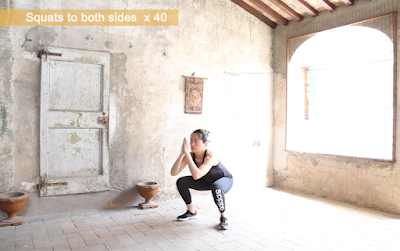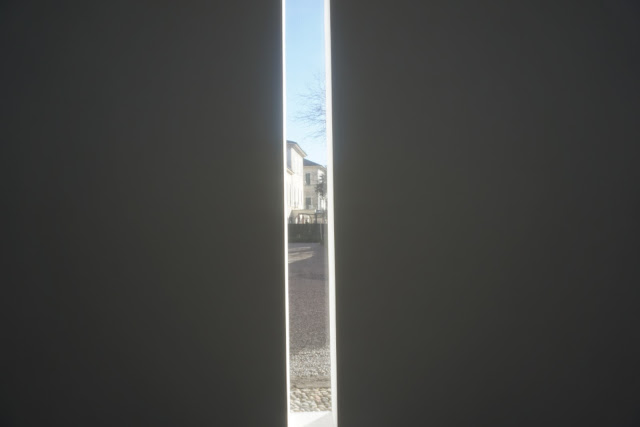How to do squats correctly-Here's the most detailed advice
💟Introduction 💟What is to know 💟Technique
Introduction
The squat is a multi-joint exercise and - by many - considered a "fundamental" training for the mass and / or strength of the thighs and buttocks.
In reality, there are no really "fundamental" exercises; except, of course, in the case of disciplines that are based on the specific athletic gesture (eg powerlifting).
Those who, for anatomical-functional reasons, are required to exclude the free squat from their routine, should do so. Similar movements can be performed at multipower or with strength machines (such as leg-press, hack squat machine, etc.). Otherwise, a greater risk of injury must be taken into account.
After an exhaustive preface on the characteristics of the squat, I will explain step by step how to do it correctly. Obviously, especially if you want to start "loading" the barbell, the presence of a qualified instructor who evaluates the technique as a whole is - both for performance and preventive purposes - an essential requirement.
Note: during the practice the use of one or two mirrors remains fundamental, necessary to internalize the specific motor pattern and to correct any defects.
What is to know
The squat is, in all probability, the best exercise to tone and strengthen the muscles of the lower limbs - but not for this, as anticipated, it must be considered irreplaceable.
The movement is apparently simple; we involuntarily perform it every time we sit and lift from a chair, but this does not mean that flexibility and mobility are necessary - often inadequate in sedentary or deconditioned people.
By adding an overload, the question becomes even more complex - also because, in addition to requiring more strength, the center of gravity shifts, involving the muscles in a different way.
The correct execution of any "heavy" squat requires a great synergy between numerous muscle groups, each of which relaxes and contracts in specific phases of the movement.
There are several variations of squats; the classic, or so to speak standard, is called "regular". The technique changes according to where the overload is placed, the position of the feet, the depth of the squat etc.
Given its "delicacy", the squat is often considered the main cause of injuries to the knees and back. That said, although the danger is "potential", it is enough to take simple preventive measures to see it decrease significantly.
First of all, a functional evaluation. To avoid getting hurt, you need to be able to move freely on the affected joint degrees of the exercise. If a stiffness in the pelvis or ankles or rachis persists, before starting to "squat" it will be necessary to face a specific conditioning period.
The stresses that the squat exerts on joints, bones and tendons, if well calibrated, are also the fundamental prerequisite for an adaptation that will strengthen them, guaranteeing greater efficiency in movements and significantly reducing the risk of injuries.
The squat is therefore an extraordinarily effective exercise, which brings enormous benefits, despite having contraindications and potential side effects - when poorly managed.
Technique
Learn the correct execution technique. To incorporate the squat into your thigh and glute training routine, you need to learn how to do it correctly in total safety.
Let's start by specifying that in the execution of the squat you need shoes with a uniform and thin sole; it is also not recommended to put shims under the heels, unless it is necessary for very specific functional issues (it will be the trainer to recommend it).
Start without a barbell, dumbbells, or kettlebells. Bring your hands to your chest or behind your neck or, alternatively, use a stick that simulates the metal bar resting at the height of the seventh cervical vertebra or the posterior deltoids; after that:
- if you use the stick, grasp it with a slightly wider grip than the shoulders, with the palms of the hands pronated (forward), and place it behind the shoulders at the height of the trapezius (between C7 and the rear delts) checking that it is well centered;
- the shoulder blades must be kept adducted (pulling the shoulders back slightly), the abdominals in "hold" (solidity of the core), the feet slightly wider than the shoulders and with an external opening of the toes of 30 °, the pelvis slightly rotated forward (moving the butt out);
- before starting to squat, perform a deep diaphragmatic inhalation, checking the tension of the "abdominal belt" (thus preventing the lower abdomen from pushing out). During the descent you will hold your breath, while from the second half of the ascent it may be useful to exhale slowly;
- then start squatting at a controlled speed, avoiding lateral movements of the knees. It is normal for the torso to lean forward slightly, especially if the basone rests very low on the shoulders or if there is a slight stiffness in the posterior chain (hamstring). The back is normally supported on the lumbar curvature, but not overstretched;
- the excursion of the squat can vary according to the goal; up to the parallel, when the knee is level with the pelvis, the quadriceps (thighs) work, while from the parallel down, the buttocks work a lot. The posterior thigh musculature (eg hamstring) performs a very important synergistic work but less from the point of view of the load. Attention! if your heels come off the ground during the descent or you experience serious balance problems, you are not ready to perform the exercise and need a period of conditioning;
- just before reaching the maximum squat position, start to slow down to avoid "letting yourself fall" by bouncing on your ankles and knees;
- once you have reached the desired height, start your ascent by feeling the thrust in the center of the sole of the foot (not on the heel and not even on the forefoot).



Comments
Post a Comment
Your voice is very important to me. How can I better accompany you?